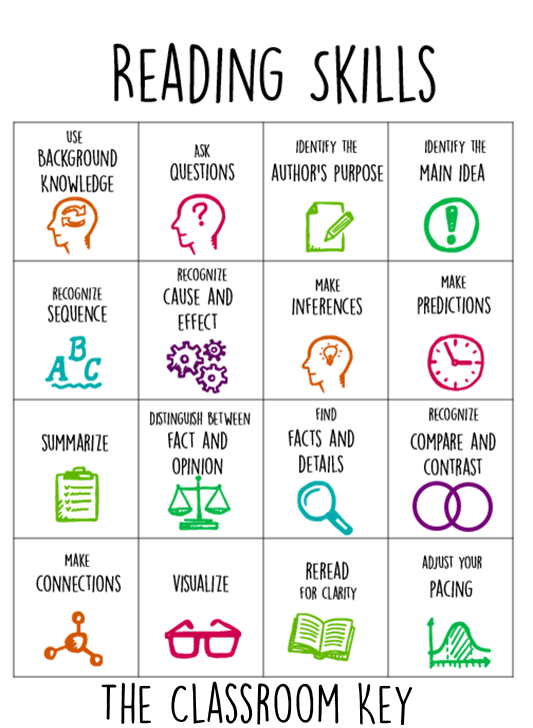
Effective Strategies for Improving Reading Comprehension in Children
Establishing strong reading comprehension skills in children is essential for their academic success and lifelong learning. A solid foundation in reading not only boosts confidence but also enhances a child’s ability to engage with complex texts as they progress through school. This blog post outlines effective strategies that parents, educators, and caregivers can implement to improve reading comprehension in children.
Building a Strong Foundation
A robust foundation in reading skills is fundamental for children’s success. Key skills such as decoding, phonics, and sight words should be prioritized. Engaging activities and games can make learning enjoyable while simultaneously enhancing vocabulary and fluency. For instance, using flashcards or interactive apps can reinforce these skills effectively. Research shows that children who have a strong base in reading are more confident and better equipped to tackle more complex texts later on. Incorporating fun games that focus on phonics and sight words can transform the learning experience. For example, word bingo or phonics puzzles can turn practice into play, making children eager to participate. Additionally, frequent reading sessions, even for short durations, can help solidify these crucial skills. Through consistent practice and engaging methods, children can develop a love for reading that lasts a lifetime.

The Power of Visual Aids
Visual aids play a significant role in enhancing comprehension, especially for struggling readers. Tools like charts, diagrams, and illustrations provide contextual support that helps children grasp key concepts more readily. These aids act as memory triggers, making it easier to recall information later. Incorporating visual elements into reading sessions can make the material more engaging and accessible. For example, using storyboards or mind maps can help children visualize the plot and characters of a story. This not only aids in comprehension but also caters to various learning styles, ensuring all students can benefit. Research indicates that visual learning can enhance retention and understanding, making it a powerful tool in any reading program. By incorporating visual aids, parents and teachers can create a more inclusive and effective learning environment.
Encouraging Active Reading
Active reading strategies encourage children to engage deeply with the text, fostering critical thinking skills and enhancing retention. Encourage children to ask questions before, during, and after reading. Highlighting important phrases or summarizing sections can also promote interaction with the material. By relating stories to their own experiences, children can make personal connections that deepen their understanding. Discussing the text afterward is another effective way to solidify comprehension. Encourage children to share their thoughts and feelings about the story, which can lead to richer discussions and insights. This interactive approach not only improves understanding but also cultivates a love for reading. By making reading an active experience rather than a passive one, children are more likely to develop a lifelong appreciation for literature.
Consistent Practice is Key
Regular reading practice is crucial for developing strong comprehension skills. Encourage children to read a variety of genres and authors to broaden their exposure and interests. Daily reading sessions can be as short as 10-15 minutes, making it manageable for busy schedules. This consistent practice helps children build confidence and improve their ability to interpret texts. After reading, having children summarize the content reinforces understanding and encourages them to reflect on what they have learned. This practice not only solidifies comprehension but also enhances their ability to articulate thoughts and ideas. The more children read, the more skilled and confident they become, leading to greater success in their academic endeavors.
Selecting Appropriate Reading Material
Choosing the right books is vital for maintaining a child’s interest in reading. It’s essential to select material that aligns with the child’s age, interests, and reading level to foster engagement. Books that are too challenging can lead to frustration, while those that are overly simplistic may not promote growth. A balanced mix of fiction, nonfiction, and poetry can keep reading exciting and varied. Parents and educators can consult resources like Amazon or Goodreads to find age-appropriate recommendations tailored to children’s interests. Introducing new genres can also spark curiosity and inspire children to explore different forms of literature. By carefully selecting reading materials, adults can help children develop a genuine love for books and stories.
The Importance of Reading Aloud
Reading aloud offers numerous benefits for children’s comprehension development. This practice creates a shared experience that can enhance understanding and enjoyment. Using expressive voices and gestures to bring characters and stories to life can make reading sessions more engaging. After reading, discussing the plot, characters, and emotions with the child can further deepen comprehension. Research indicates that reading aloud not only improves comprehension but also strengthens the bond between parent and child. It provides an opportunity for parents to model fluent reading and expressive storytelling. This shared activity can foster a lifelong love for reading and literature. By making reading aloud a regular practice, families can create lasting memories and enhance their children’s educational journey.
Utilizing Technology and Resources
In today’s digital age, leveraging technology can significantly support reading comprehension. Audiobooks, educational apps, and online resources provide diverse learning experiences that can complement traditional reading. Many children respond positively to multimedia content, which can enhance their engagement and understanding of the material. Interactive platforms can track progress and adapt to individual learning needs, making reading more personalized and effective. For instance, apps that offer gamified reading challenges can motivate children to improve their skills while having fun. By combining various resources, parents and educators can create a well-rounded approach to improving reading skills and comprehension, ensuring that children benefit from multiple learning modalities.
Addressing Individual Learning Needs
Recognizing and addressing individual learning challenges is vital for fostering a supportive reading environment. Some children may struggle with decoding due to dyslexia or other learning disabilities. Tailoring strategies to meet these unique needs can make a significant difference in their reading journey. Collaborating with educators or specialists can help develop personalized learning plans that address specific challenges. This approach encourages a positive and supportive environment, fostering resilience and a love for reading. By understanding individual learning needs, parents and teachers can provide targeted support that empowers children to overcome obstacles and thrive in their reading endeavors.
Creating a Positive Reading Environment
Establishing a nurturing atmosphere for reading is essential for encouraging ongoing engagement. Make reading a cozy and enjoyable activity by incorporating treats or special reading times. This positive association can reduce anxiety and promote a love for books. Creating a dedicated reading space with comfortable seating and good lighting can enhance the reading experience. Encourage discussions about stories and characters to deepen understanding and foster critical thinking. By making reading a valued activity within the family or classroom, children are more likely to develop a positive attitude towards literature. Ultimately, a supportive environment can significantly impact a child’s reading journey, helping them become confident and enthusiastic readers.
